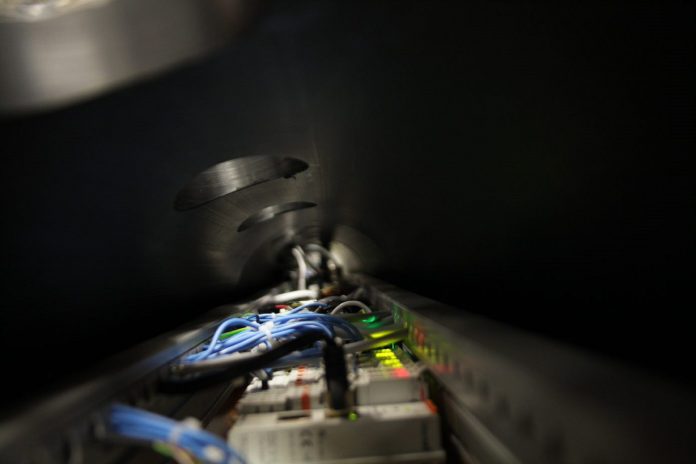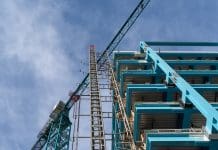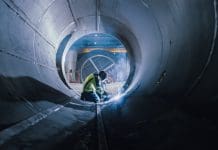A new automated construction method showing a tunnel built entirely by robots has debuted at hyperTunnel’s R&D facility
The world’s first tunnel built by robots has been unveiled at hyperTunnel’s research and development facility in the North Hampshire Downs.
The robot-constructed underground structure is the latest development in the hyperTunnel process, which has been explored as a possible solution as low-disruption tunnel repairs for Network Rail’s regional railway infrastructure, which includes approximately 650 Victorian age tunnels.
Safety, sustainability and efficiency are priorities of the new method
The new automated construction method is designed to build tunnels over 10 times faster and at half the cost of conventional methods.
The approach will use sustainable materials such as low-carbon concrete.
Safety in the tunnelling industry could be revolutionised with tunnels built by robots, as no humans are required to enter the structure during construction, reducing the risk of incident or injury on site.
A digital twin is used to recreate the tunnel and guide the robots
Using swarm construction methods according to a digital twin of the tunnel, a fleet of ‘hyperBot’ robots enters the ground via an arch of HDPE pipes.
Once inside, the robots 3D-print the tunnel shell by deploying construction material directly into the ground.
The 6 metre-long, 2 metre-high and 2 metre-wide Peak XV ‘pedestrian-scale’ tunnel has been delivered as part of a project for Network Rail and was revealed at the British Tunnelling Society Conference & Exhibition in London in early October.
De-risking and increasing efficiency
David Castlo, network technical head (mining and tunnels) at Network Rail, said: “Our large portfolio of Victorian tunnels requires increasing levels of work to meet the needs of the railway network. However, we want to reduce the level of disruption to our passengers so we are constantly searching for new approaches to enlarging or repairing tunnels that reduce the length of time a tunnel will be closed to trains. Peak XV moves us a step closer to that goal and, crucially, with a method that reduces workforce safety risk.”
Steve Jordan, co-CEO and co-founder of hyperTunnel, said: “To unveil our first large scale demonstration tunnel is a big step, not only for hyperTunnel, but for the tunnelling and construction industries which are eagerly anticipating the readiness of our approach to use, as appropriate, in their global projects.
“While using robots exclusively to build underground structures is dramatically different, the contributing technologies, such as digital twins, robotics, 3D printing and digital underground surveying, supported by AI and VR, are all well-proven in other industries. In fact, the hyperTunnel in-situ method is all about de-risking construction projects.”










![[VIDEO] First HS2 twin-bore tunnel completes civil engineering phase The HS2 twin bore tunnel, Long Itchington Wood Tunnel](https://www.pbctoday.co.uk/news/wp-content/uploads/2025/02/HS2-Long-Itchington-tunnel-walk-25_cropped-218x150.jpg)



